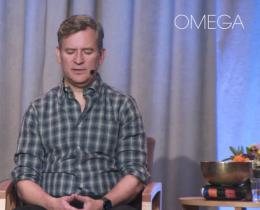What: Devotional meditation and prayer can help you cultivate a closer relationship with the divine. The practice typically takes place through spontaneous conversation with a higher power, a formalized method of prayer, or a meditation practice that is performed with an attitude of devotion.
Types: Hesychasm and centering prayer in Christianity, hitbodedut in Judaism, and other forms of devotional meditation and prayer from various spiritual traditions.
See also: Chanting meditation (when focused on a sacred mantra, hymn, or deity); visual meditation (when focused on a spiritual object or being); moving meditation (when practiced as a form of body prayer); and nature meditation (when practiced with a devotional attitude or an intent to find the divine in nature).
Benefits: In Meditation for Your Life, yoga and meditation teacher Robert Butera observes that a practitioner of devotional meditation and prayer may experience “a shift in consciousness or closeness to the divine.” And “in profound devotion, the subject and the object merge into one.”
Keywords: receptive, heart-centered, prayerful
Try this: If you feel connected to a higher power, nature, or a specific form of the divine, Robert Butera suggests you simply sit quietly and talk about a specific topic, ask for help, or pray for others. The key, he says, is to cultivate a receptive state of mind, so that you listen more than you talk. Silence is key in this practice.
You can also try Butera’s three-step approach to contemplative prayer. Here are instructions from his book:
- Focus on your understanding of the divine from an immanent way. Pray a prayer of thanksgiving for the divine aspects of life. Try to feel your connection to the divine by praying from your heart.
- Once you feel this connection in the heart, begin to expand the connection to a universal perspective. Focus on the mind in stage two. Do not dismiss the heartfelt feelings, but expand the feelings to connect all living beings. See the global or universal nature of the divine. Your prayer has ceased to be individual and now includes the world. This step requires many levels of acceptance and understanding that your personal view of life is limited by your own unique experiences. This step allows you to grow beyond your own personal beliefs.
- Once you feel at peace with both your own heart and the universe, then it is time to cease striving. Just be. Please be aware that you may not reach this step immediately. If you attempt to cease striving but end up with a rash of thoughts, then return to step one. If you feel very quiet in this state, remain there for up to 20 minutes.



